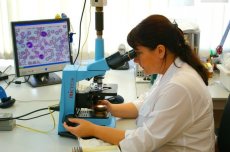Antibodies found capable of defeating all types of influenza
Last reviewed: 23.04.2024

All iLive content is medically reviewed or fact checked to ensure as much factual accuracy as possible.
We have strict sourcing guidelines and only link to reputable media sites, academic research institutions and, whenever possible, medically peer reviewed studies. Note that the numbers in parentheses ([1], [2], etc.) are clickable links to these studies.
If you feel that any of our content is inaccurate, out-of-date, or otherwise questionable, please select it and press Ctrl + Enter.

A group of scientists from the Scripps Institute and the Sea Lane Biotechnologies organization have discovered a new component for vaccines that will help increase the effectiveness of drugs against common types of influenza, including H2, H1 (swine flu), H9 and H3 subtypes.
A team of researchers examined samples of the bone marrow of people who had recovered from a certain strain of influenza.
The bone marrow carries information about all the antibodies ever produced by the body. Experts were sure that they would find those antibodies that interest them, and they were not mistaken. They found billions of antibodies, which they called the "influenza library".
By screening, scientists have been able to isolate an unknown antibody that can bind to proteins of various types of influenza A-the most dangerous type of influenza viruses. This antibody was called C05.
The detected antibody successfully protected cells from "attacks" of influenza viruses. The experiments were carried out both in laboratory conditions and in experiments with mice. If previously the infection of rodents with type A virus led to a lethal outcome, then under the protection of the antibody all the mice successfully recovered.
Also, the researchers noticed another feature of C05: besides that the antibody neutralized a wide spectrum of influenza viruses, it could block the "binding site of the receptor" (RBS) - part of the influenza virus, which helps to join the cells of the human body.
The so-called binding site is the main part of the influenza virus that affects the immune system, so this is the ideal target for C05.
"This discovery opens up a good opportunity for us to develop new vaccines and therapies," comments Ian Wilson, a professor of structural biology.
To "deal" with the enemy virus, the antibody uses two hand-like structures, each of which has six protein loops and fingers. Capture occurs not only with respect to the binding receptor. The structures surrounding the "head" of the virus (they distinguish one strain of influenza from another) are also attacked.
"If we can find out how this type of antibodies can be used in anti-influenza vaccines, we will get a very effective medicine," says Lorenz Horowitz, CEO of Sea Lane Biotechnologies.

 [
[